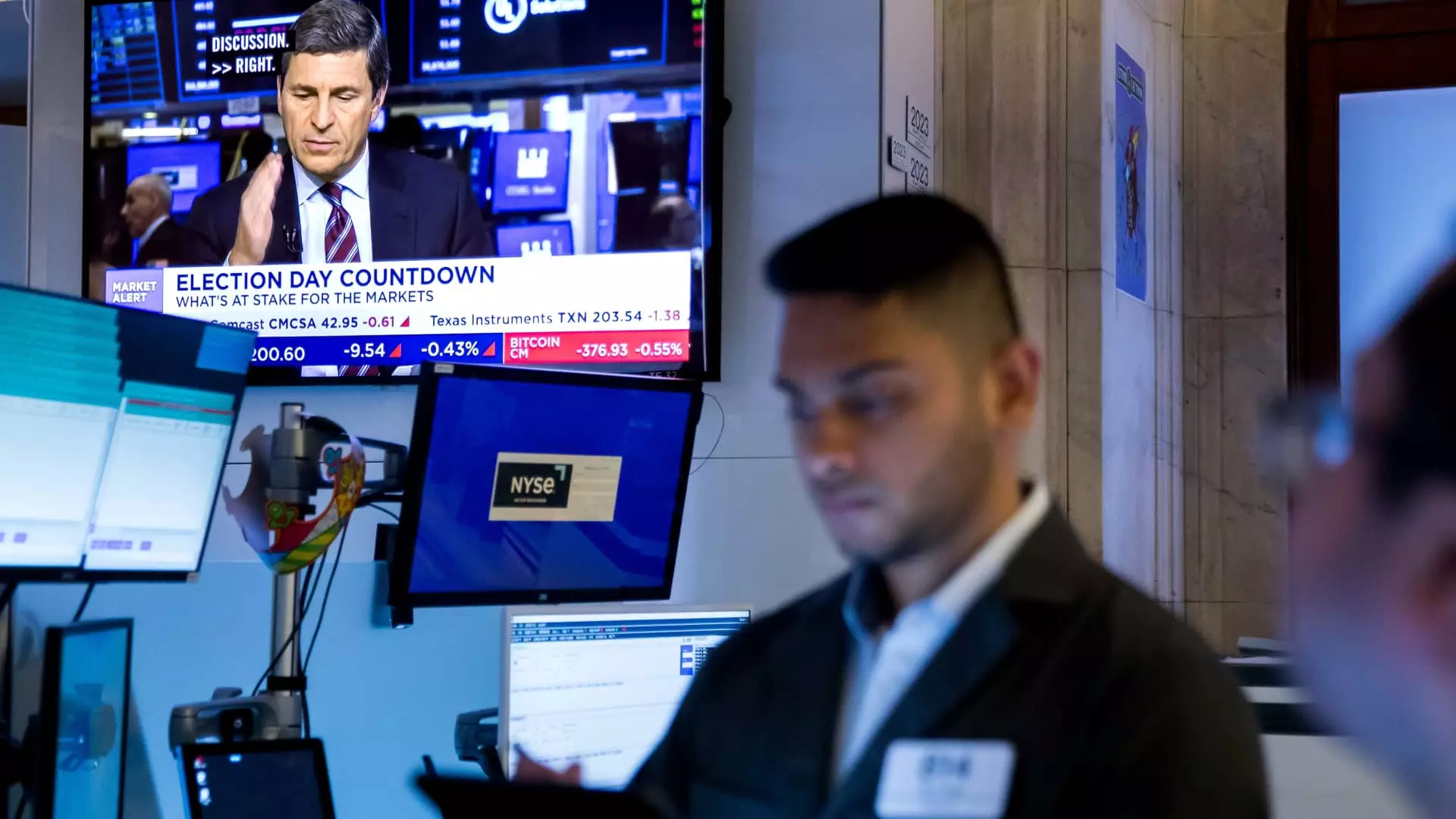Navigating the tumultuous waters of the stock market requires not only a keen eye for detail but also an understanding of the underlying narratives that steer investors. One such narrative emerges from “Stocks @ Night,” a newsletter that encapsulates daily movements and provides insights into tomorrow’s market forecasts. As we prepare for the impending decisions at the polls, investors are closely eyeing the fluctuations that have characterized the market in recent weeks.
Recent developments in China have added another layer of complexity to investment strategies. Notably, renowned investor David Tepper of Appaloosa Management made headlines when he suggested purchasing stocks tied to the Chinese economy. Following his endorsement, several China-focused exchange-traded funds (ETFs) demonstrated impressive gains. For instance, the KraneShares CSI China Internet ETF (KWEB) surged 11%, while the iShares MSCI China ETF (MCHI) rose by 8.2%.
However, it’s crucial to maintain perspective. Despite these spikes in value, these ETFs remain significantly below their highs from earlier in the month. KWEB is currently down by 17%, FXI by 15%, and MCHI has experienced a 16.6% decline since October 7. This juxtaposition of short-term gains against a backdrop of longer-term volatility underscores the precarious nature of the market—a reminder that swift changes in sentiment can swiftly reverse the trajectories of seemingly promising investments.
Political Landscape and Cannabis Regulation
As Election Day looms, various states are poised to cast their votes on crucial issues, including the legalization of cannabis. States like Florida, North Dakota, South Dakota, and Nebraska are in the spotlight. Stakeholders in the cannabis industry have observed a burgeoning wave of optimism, with companies such as Canopy Growth experiencing a remarkable 24% increase in a single month.
Investors are also paying attention to ancillary businesses. For example, Aurora Cannabis and Scotts Miracle-Gro have seen their stock values increase by 8.7% and nearly 10%, respectively. This uptick highlights the interconnectedness of industries and how legislative changes can ripple through ancillary sectors, creating a positive feedback loop among investors and consumers alike.
Dwindling water resources, particularly in regions like New York, are propelling investments toward companies specializing in water management and recovery. Energy Recovery has seen a striking uptick of 9.6% in a month due to its relevance in addressing these climate-related challenges. The demand for efficient water management solutions has spurred investor interest, with other companies, such as Global Water Resources, also outperforming the broader market by posting a 16% annual increase.
The present drought—reportedly the worst since 1869—provides a stark reminder of climate change’s tangible impacts and emphasizes the necessity for sustainable practices within industries reliant on natural resources.
Corporate earnings season also plays a pivotal role in shaping market perceptions. Following quarterly reports, companies such as Yum Brands have been scrutinized as they face fluctuations in their stock prices. Yum Brands, which operates popular fast-food chains like KFC and Taco Bell, has recently seen its stock dip by 1.8%. Similarly, other corporations preparing for earnings releases have experienced mixed fortunes amid heightened scrutiny and speculation from analysts.
Moreover, firms facing external pressures, like Super Micro, which recently faced allegations from short sellers, illustrate the volatility that can engulf stocks during unpredictable periods. The 78% decline from March highs signifies a significant loss of investor confidence—an unsettling reminder that shorts can drastically influence market sentiment.
The interplay between political decisions, domestic economic policies, and global influences creates a multifaceted investment landscape. The current climate underscores the importance for investors to remain vigilant and adaptable in their strategies. Economic fluctuations, market sentiments, and emerging trends are not simply numbers on a chart; they encapsulate stories that require ongoing analysis and understanding. As we march toward Election Day, the decisions made by voters will undeniably have repercussions far beyond the ballot box, shaping market dynamics in the complex web of investment opportunities.

